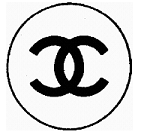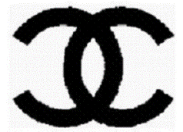June 1, 2021
Facts
In September 2017, Huawei Technologies Co Ltd applied to register the following figurative sign as a EU trade mark in Class 9 for, inter alia, “Computer hardware and computer software programs for the integration of text, audio, graphics, still images and moving pictures into an interactive delivery for multimedia applications”:

The well-known fashion house, Chanel, opposed registration of the mark based on:
i) Article 8(5) of the Trade Mark Regulation (207/2009/EC), on the ground that it was similar to its own earlier French mark registered in, inter alia, Classes 3, 14, 18 and 25 covering “Perfumes, cosmetics, costume jewellery, leather goods, clothes”:

and;
ii) Article 8(1)(b) of the 2009 Regulation, on the ground that it was confusingly similar to its own earlier French mark registered in, inter alia, Class 9 covering “Cameras, sunglasses, glasses; earphones and headphones; computer hardware”:

The Opposition Division rejected the opposition and the Fourth Board of Appeal dismissed Chanel’s appeal, finding that there was there was no likelihood of confusion in relation to the earlier mark under Article 8(1)(b), and that Huawei’s application mark was neither identical nor similar to Chanel’s allegedly reputed registration, meaning that the first condition for the application of Article 8(5) was not satisfied. Chanel appealed to the General Court.
Decision
Article 8(5)
Chanel argued that the signs were similar overall to an average degree when viewed in the orientation in which they were applied for, and to an average to high degree when Huawei’s sign was rotated by 90 degrees. It said that the BoA was wrong not to take into account Huawei’s sign in an orientation other than that in which it had been filed, and that it was permissible to consider a rotated sign if it corresponded to the perception that the public might have of it when affixed to goods.
Chanel noted that, obviously, no phonetic comparison of the marks could be made and argued that, instead of finding that the marks were dissimilar from a conceptual point of view, the BoA should also have found that no conceptual comparison could be made either, as the marks had no meaning and did not convey any concept.
The GC noted that, in order to satisfy the first condition of Article 8(5) (identity/similarity of the signs), there is no need to prove a likelihood of confusion and it is sufficient for the degree of similarity to have the effect that the public will establish a link between them. Further, the similarity of the marks must be based on the overall impression of them, bearing in mind their distinctive and dominant elements. Marks will be considered similar where they are at least partially identical in respect of one or more relevant aspects.
In addition, the GC said, when assessing identity and similarity, the signs must be compared in the form in which they are applied for or registered and the actual or potential use of registered marks in another form is irrelevant. This was important, the GC said, to avoid any uncertainty as to the scope of protection granted. This finding was not called into question by the case law cited by Chanel.
The GC found that the signs did share certain characteristics, i.e. a black circle, two black interlaced curves, which the circle surrounded, intersecting in an inverted mirror image, and a central ellipse resulting from the intersection of the curves. However, the visual differences between the marks were more significant: (i) the curves in Chanel’s mark were more rounded and resembled the image of two letter “Cs” whereas Huawei’s image resembled the letter “H”, “h” or two “U”s; (ii) the curves were stylised and arranged differently: horizontally in Chanel’s mark and vertically in Huawei’s sign; (iii) the central ellipse was orientated differently as a result of the intersection of the curves: vertically in Chanel’s mark and horizontally in Huawei’s mark; (iv) the curves were thicker in Chanel’s mark compared to those in Huawei’s sign, as was the outer circle in Huawei’s sign compared to that of Chanel’s mark; (v) the intersection of the interlaced curves of Huawei’s sign was visible, in that the line was interrupted where the curves crossed, but that was not the case in Chanel’s mark; and (vi) the distance between the circle line and the ends of the curves in each sign, i.e. the points where the curves began and ended, differed.
Therefore, the GC said, when assessed globally, the signs were visually different, despite the presence in both of two interlaced curves within a black circle, which in any event was a common geometric element.
As for the conceptual assessment, the GC said that the signs were different as Chanel’s mark referred to the letter “C” and Huawei’s sign referred to the letter “H” or “U”.
Therefore, the BoA had been correct to find that the first condition of Article 8(5) had not been satisfied.
Article 8(1)(b)
The GC found that the circle, which was present exclusively in Huawei’s sign, surrounding the curves gave the sign a specific arrangement and proportions that were not present in Chanel’s mark. Even though the signs shared characteristics, namely two black interlaced curves intersecting in an inverted mirror image and a resulting central ellipse, the absence of a circle in Chanel’s mark and the consequent arrangement ruled out any visual similarity.
As for the likelihood of confusion, given that the signs were not similar, the other relevant factors for the global assessment of the likelihood of confusion could not under any circumstances offset and make up for that dissimilarity. Therefore there was no need to examine them.
Accordingly, the GC held that the BoA had been correct to reject this ground of appeal. The GC dismissed the appeal in its entirety. (T-44/20 Chanel v EUIPO EU:T:2021:207 (21 April 2021) — to read the judgment in full, click here).
Expertise